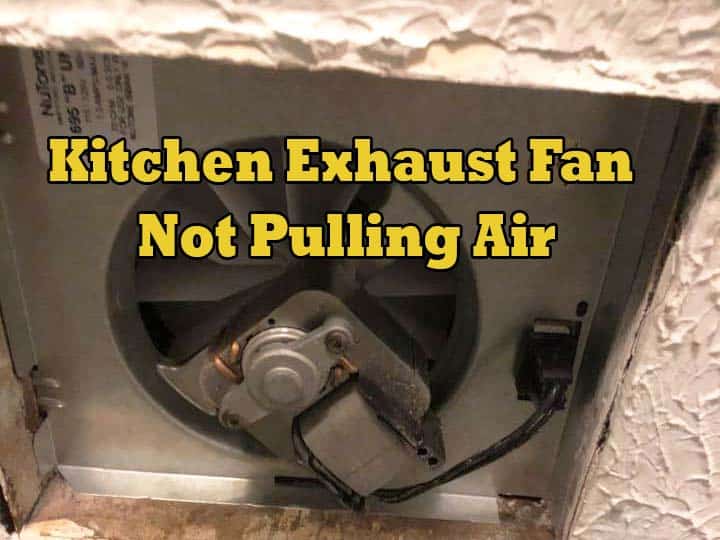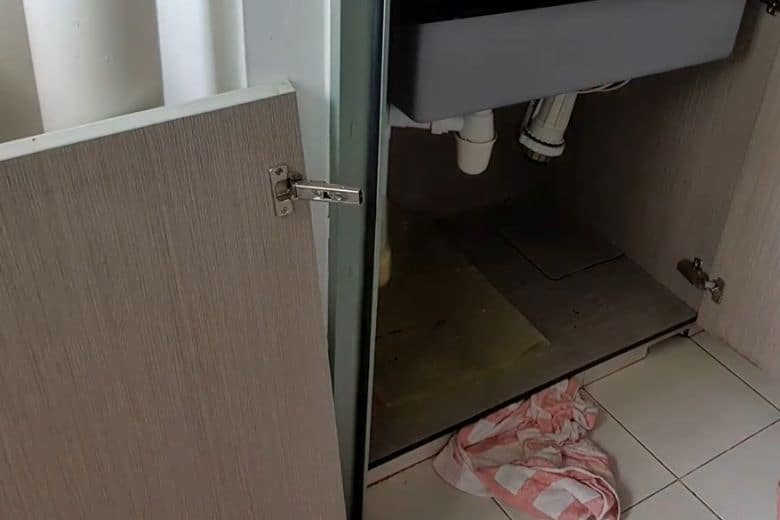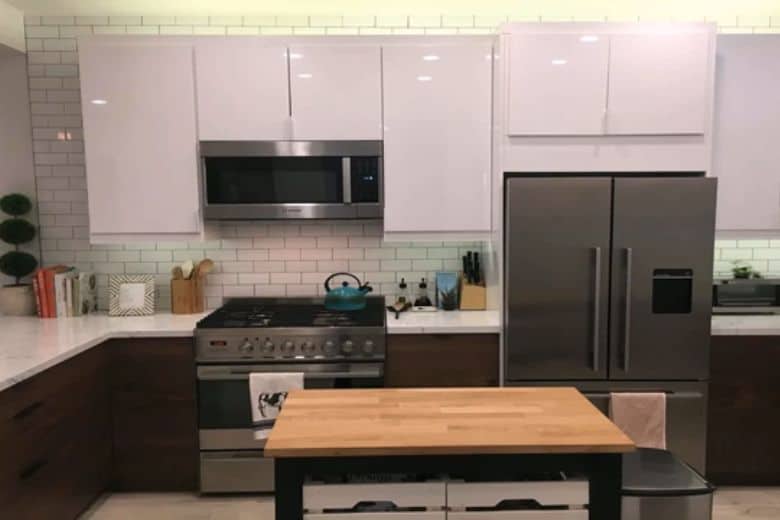A kitchen exhaust fan is responsible for pulling air from the indoors to keep your kitchen neat and clean. As it pulls air, it removes particles and the tiniest debris from the kitchen environment. Thus, you will face many problems when the kitchen exhaust fan stops working and pulling air. First, it will make the space dirty and stinky.
Thus, you may ask, “Why is the kitchen exhaust fan not pulling air? How to fix the exhaust fan in my kitchen?”
When the exhaust fan in the kitchen stops working, it may be due to problems in the air duct and clogged air filters in your home. Also, the broken blade of the fan or damaged motor might force the exhaust system to work correctly.
You will need to inspect the different parts and see what is causing the fan to stop working. Then, you may fix it by following our tips.
How to Check If Kitchen Exhaust Is Working
When you suspect the kitchen exhaust fan isn’t working, there’s an easy way to find it. For this, please switch off the exhaust fan and keep it idle for a few minutes. Then, please turn it on and run at maximum settings for the next few minutes.
If the fan works properly, you will experience cooler air inside the kitchen. Also, a properly working exhaust system won’t be noisy. Another way of identifying the exhaust system’s workability is to sniff the kitchen environment. If the fan works properly, there will be no stinky odors. If the fan has stopped working, you will experience foul odors inside the kitchen.
Why Is My Kitchen Exhaust Fan Not Working
The exhaust fan in the kitchen keeps your cooking space free from odor, debris, and tiny particles that fly in the air. Plus, it brings cooler and fresh outdoor air to keep the indoors healthy and refreshing. But, unfortunately, your kitchen will soon become dusty and stinky if it somehow becomes faulty.
But why the kitchen exhaust fan stops working? Let’s see the reasons:
Damaged blades of the fan:
Usually, an exhaust fan has 3 to 4 blades. These blades are made of plastic and are meant to last for years. However, at times, the blades may become damaged due to overuse. Sometimes, it gets damaged during storms or floods too.
When the blades are damaged, they fail to pull the air from indoors to outdoors. So, the kitchen becomes stagnant with the air.
Faulty motor:
Exhaust fans come with a simple and small motor. It provides the necessary power for the blades to rotate and pull the air outside. However, with time, the motor may become faulty or start malfunctioning. As a result, the blades don’t receive enough rotatory power, resulting in a not working exhaust fan.
Sometimes, the motor may build up residues and start corroding. It will also result in the improper functioning of the fan.
Residue and grease build-up:
The exhaust fan pulls up the polluted air from the kitchen. This air contains smaller oily particles, tiny debris, etc. When the fan sucks this contaminated air, the oil particles and debris will sit on the fan blades.
When the residues sit too long on the fan blade, it becomes greasy. This grease will later stop the fan from working. Also, excessive grease slows down the blade speed. As a result, it fails to pull enough air from the indoor kitchen.
Inappropriate duct system and vents:
The duct system and vents are responsible for adequately working exhaust fans and range hoods. Range hoods have air filters inside them. Although exhaust fans don’t have high-end air filters, a complex ducting system will hurt their performance.
Poor ventilation means the fan will have less space to pull the air outdoors. As a result, the kitchen air becomes stagnant and starts smelling stinky. Thus, you must maintain proper ventilation for the exhaust fan to work accurately.
How to Fix Exhaust Fan in Kitchen
The kitchen generates smoke and grease daily, two to three times during cooking. Therefore, you need a properly running exhaust fan to remove the grease, debris, and smoke from such congested space. However, it can be worrisome when a kitchen exhaust fan doesn’t work. Thus, you must find a solution to it.
Repair the blades:
First, check the fan blades closely. You can fix it with glues and putties if it has minor damage. The blade may become bent due to air pressure or being hit by something heavy. You can try to remove the bent with a wrench. The blades are plastic-made and are bendable with firm pressure and tool.
If the blade is damaged too much, you can change them from the hardware store. You need to remove its screw to replace the old blades.
Try fixing the motor:
If the motor is causing the exhaust fan from working, you should check it. Sometimes, the wiring of the motor to the fan may become loose or damaged. Also, the motor itself can be damaged. For example, its ICs may burn out for overload and high heat.
In most cases, you can fix the motor by changing its wires and ICs. However, if it still doesn’t work, you must replace the entire motor. In fact, you are better off replacing the entire exhaust fan when it happens.
Clean the grease:
Mainly, grease on the motor and blade of the fan will cause its inappropriate working. Hence, you should clean the residues and greases from the blade and motor. Then, remove the fan from the exhaust point. Or, you may even work from there.
Apply detergent and liquid water to the grease. Let it soak for half an hour. Then, brush it off with a stiff, bristled brush. You may need to repeat the cleaning process multiple times to remove the grease and residue from the blade and motor.
Finally, clean the water from the blade and allow it to dry for another half an hour. Now, the fan will work at full speed.
Ensure proper ventilation:
Another way of fixing the exhaust fan is to ensure proper ventilation. If the fan lacks space to ventilate the air outdoors, it will fail to remove the odor and grease from the kitchen. Then, you can try relocating the fan for better air circulation. Plus, check your home’s duct system and ensure it is working correctly.
How to Test Range Hood Suction
To check the range hood suction facility, you must reach the top of its hood. There you will find the air outlet. Once you have found the air outlet, try locating the grease filter grill. Usually, it has holes, so it should be easy to find.
Hold a piece of paper or ignite the light in front of it. If the range hood suction works properly, you will see the light or paper moving.
Frequently Asked Questions
- Why is my range hood not pulling air?
The range hood isn’t pulling air because of the grease or clogged air filter inside it. Plus, the duct system may also become inappropriate to use.
- How can I improve my kitchen exhaust?
You can use a range hood or exhaust system to improve the kitchen air ventilation. Also, ensure it has proper windows with enough ventilation.
- How do you clean an extractor fan motor?
Once you have removed the fan blades and motor, you can soak it in detergent-mixed warm water. Then, clean the motor with a brush and ensure it dries properly before you start using it again.
- What does a kitchen exhaust fan do?
The exhaust fan removes the smoke and grease from the kitchen indoors. Thus, the cooking space doesn’t accumulate grease to become dirty.
- Can I use an exhaust fan instead of a range hood?
Yes, it is possible to use the exhaust fan instead of the range hood. However, it will not be as effective as the range hood. So, be aware of this inefficiency problem.
Conclusion
When a kitchen exhaust fan not pulling air, it can be troublesome. Thus, you should clean its motor and blades from grease and residual build-up to help it work properly. You should also check the motor, wiring, and connections. Lastly, ensure that the kitchen has enough ventilation to remove the stinky odor and smoke from the indoors for a cleaner cooking space.
Paul Newman is a blogger who writes about plumbing and home improvement. Over the past 20 years, I have worked as a plumber. My passion is to share my knowledge and experience with others to improve their homes.




